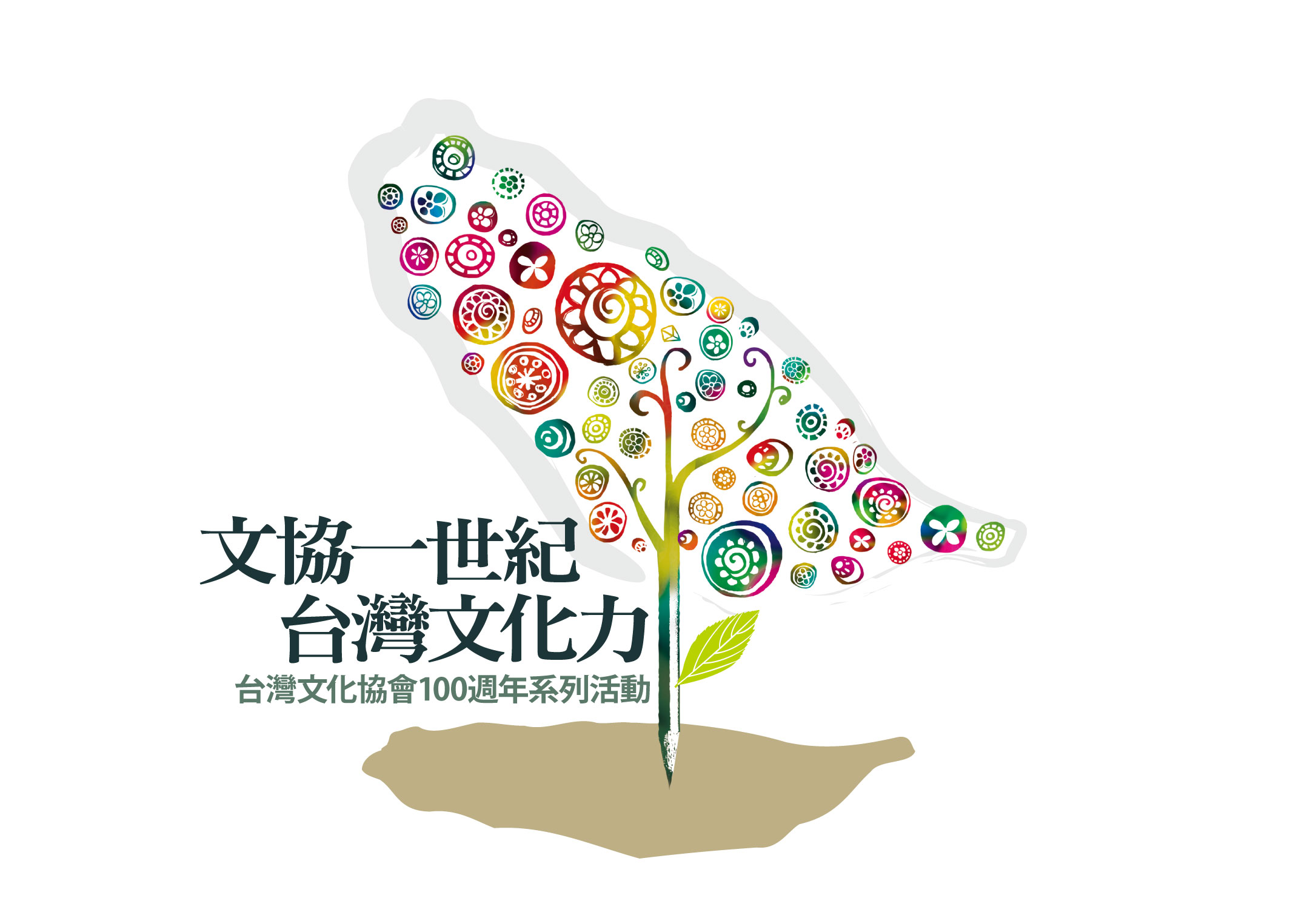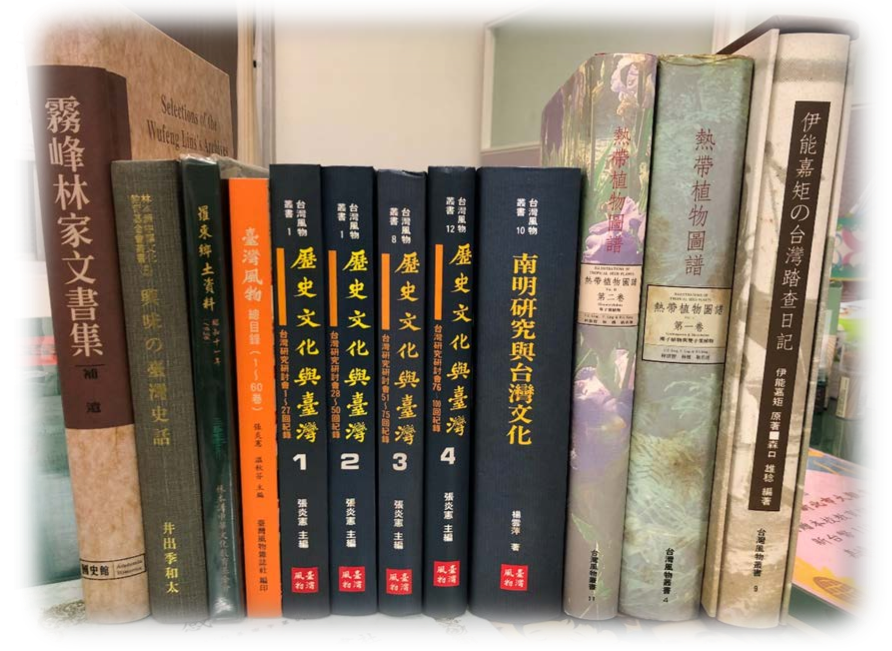 東臺灣的拓殖先驅—被遺忘的平埔族群
東臺灣的拓殖先驅—被遺忘的平埔族群
The pioneers of Eastern Taiwan – the forgotten Pingpu tribes
潘繼道/Jih-Daw Pan
2001-10-15
 Local government office resembling a shrine to a local deity.
Local government office resembling a shrine to a local deity.
台灣東部是個多族群分佈的區域,在這個區域裡,不管是漢人或原住民,其實都非真正的「原住」族群,而是在不同時期因不同需要從外地遷徙而來的族群,他們經過挑戰、衝突、回應與調和後,成為東臺灣的住民,並為這塊土地締造出豐富且多元的文化。本週「台灣歷史之窗」特別邀請中央大學歷史研究所研究生潘繼道先生執筆,介紹在這塊土地上兩個沉默的邊緣族群──噶瑪蘭族(Kavalan)與西拉雅族(Siraya),循其遷徙的路線與文化變遷的腳步,清楚地勾勒出它們族群特性與應有的文化版圖。
Eastern Taiwan is a region scattered with many ethnic groups, but whether Han or Aboriginal, none of these groups are truly “original” inhabitants. Rather, all moved into the area at different times, because of different needs. They lived through great challenges and conflicts to which they reacted, and which they adjusted to, and they became the inhabitants of Eastern Taiwan, establishing a rich and diverse culture in this land. This week’s Window on Taiwan is written by Jih-Daw Pan, a graduate student at Academia Sinica’s Institute of History. He introduces the two relatively silent and marginalized tribes, the Kavalan and the Siraya, their wanderings, and the changes in their culture, and clarifies and outlines their ethnological characteristics and cultural domains.
1. 多族群分佈的東臺灣
自古以來,東臺灣即是個多族群分佈的區域,除了閩、客為主的漢人之外,原住民族群包括太魯閣族(Truku或Toroko,即泰雅族東賽德克群—Sedeq)、撒基拉雅族(奇萊民族,Sakiraya)、阿美族(Ami)、布農族(Bunun)、卑南族(Puyuma或Panapanayan)、排灣族(Paiwan)、魯凱族(Rukai)及達悟族(Tao,以前稱為雅美族—Yami)。其實,除了這些族群外,東臺灣還居住著一些沈默的邊緣族群—平埔族,他們在漢化的洪流中逐漸沾染漢習,並接受漢式的思維模式,最後甚至「隱形」了起來,他們就是東臺灣拓殖的先驅—噶瑪蘭族(Kavalan)與西拉雅族(Siraya)。
1. The many ethnic groups of Eastern Taiwan
From ancient times, Eastern Taiwan has been a region of many ethnic groups. In addition to the Han Chinese, represented mainly by Min and Hakka groups, Aboriginal tribes including the Truku (or Toroko), who are an eastern Atayal group also called the Sedeq, the Sakiraya, the Ami, the Bunun, the Puyuma (or Panapanayan), the Paiwan, the Rukai and the Tao (previously called the Yami). But in fact, apart from these tribes, there are other, hidden tribes living in Eastern Taiwan: the Pingpu tribes. In the tide of Han sinicization, they gradually became tainted by Han customs and practices, and were directly affected by Han modes of thought, until they finally became invisible. They are the pioneers who developed Eastern Taiwan – the Kavalan and the Siraya peoples.
 Kavalan text books and learning materials from Hualien County’s Hsinshe Elementary School.
Kavalan text books and learning materials from Hualien County’s Hsinshe Elementary School.
2. 「平原的人類」—噶瑪蘭族
噶瑪蘭族原本分佈於蘭陽平原上,是平埔族群中最晚漢化的一支,其名稱起源於他們以族語自稱是「平原的人類」(Kavalan)的漢字音譯。他們以農業過程和祭儀來判斷時間週期,並兼行鏢魚、網魚及打獵。他們對靈魂相當恐懼,後來因被漢人利用,將屍體置於土地之上,甚至築墓,而使其不得不棄地他遷。
2. “The people of the plains” – the Kavalan tribe
The Kavalan were originally scattered over the Lanyang Plain, one of the last Pingpu tribes to be sinicized. In the Kavalan language, their name means “the people of the plains.” They split their time between agriculture and sacrificial ceremonies, fishing with spears and nets, and hunting wild animals. They feared spirits, and were later used by the Han people to bury their dead, and even build tombs, leaving them with no choice but to move to another area.
他們是母系社會,命名方式為「父子連名制」,並以招贅婚為常則。而過年時,他們舉行Palilin儀式祭拜祖先祈求降福。清嘉慶元年(1796)後,由於吳沙等漢人的拓墾,土地漸被奪佔,加上西部平埔族的遷入,使生活空間受到嚴重侵奪,因而於道光二十年(1840)遷移到今花蓮市美崙溪口。由於已侵犯到撒基拉雅人的捕魚區域,因而引發戰爭,使噶瑪蘭人不得不搬到北邊,而居住在今新城鄉嘉裡村。當時移居者,以加禮宛社(Karewan,今五結鄉季新社區)人口最多,因此以之命名新建的部落,而社眾也被稱為加禮宛人(Karewana)。
They were a matrilineal society, and in their system of name-giving, the son took the last name of his father as his first name, then passed on his last name to his son, and so on. It was the norm for a newly-wed man to move into the household of his wife’s parents. At the beginning of the new year, they held the Palilin ceremony to worship their ancestors and pray for benefaction. After 1796, thanks to Wu Sha and other Han developers, the land was gradually taken and occupied, and on top of this, the Western Pingpu tribes moved in, all of which constituted a serious invasion and occupation of their living space. As a result, in 1840, the tribe moved to the mouth of the Meilun river in what is now Hualien City. They had already encroached upon the Sakiraya people’s fishing areas, which led to armed conflict, and this in turn left the Kavalan people with no choice but to moved northwards, and they settled in what is now Chiali Village in Hsincheng Township. Of the migrants at this time, the Karewan Community (now Chihsin Community in Wuchieh Township) had the greatest population, and so they established themselves as a new tribe by giving new names, and they called themselves “Karewana.”
之後由於拓墾區域主要在加禮宛附近,且從事水稻種植的低濕地,與撒基拉雅人旱田燒墾粟作的土地不同;加上風俗、語彙相近,及近山地區太魯閣族侵襲的壓力,使兩族和睦相處,成為攻守同盟。隨著人口增加,逐漸分為六社。同治年間,更凌駕於阿美族、太魯閣族之上,而稱雄於奇萊平原。但「牡丹社事件」後的「開山撫番」,卻帶來命運的轉變。
Later on, because the major area of development was close to Karewan, and because they cultivated their rice in low wetlands, different from the methods of the Sakiraya, who practiced shifting cultivation and planted millet on dry land, and because their customs and languages were close, and the pressure resulting from encroachment by the Taroko tribe from nearby mountain regions made the Karewana and Sakiraya get along, and they made an alliance. As their populations increased, they gradually split into six communities. During the reign of the Qing Emperor Tongzhi (1862 – 1874), they overrode the Ami and Taroko tribes, and took possession of the Chilai Plain. But the “opening of the mountains and pacifying of the barbarians” which took place after the Mudan Incident of 1871 brought changes to their lives.
光緒四年(1878),陳輝煌以官軍身份招搖撞騙,又詐索加禮宛人金錢;加上清軍欺壓、凌辱婦人,因此聯合撒基拉雅人共同抗清。但最後在寡不敵眾及清軍優勢火力下,於九月上旬降服。之後除了處死首謀者外,並由總兵吳光亮擇地安插加禮宛人,同時劃清漢番地界。這場戰役後一些加禮宛人搬遷到花東縱谷及東海岸,造成奇萊平原原住民勢力重新洗牌。
In the fourth year of the Guangxu Emperor (1878), Chen Hui-huang used his status as an official military man to carry out a great swindle, and extorted money from the Karewana; in addition to this, the Qing army rode roughshod over them and raped the women, and so they united with the Sakiraya to resist the Qing together. But ultimately they were hopelessly outnumbered, and the Qing army had the advantage of firepower, and at the beginning of September the Aboriginals surrendered. Afterwards, apart from executing the leaders of the rebellion, Commander Wu Guang-liang decided to resettle the Karewana in certain locations. At the same time, he drew clear boundary lines between Han and Aboriginal peoples. After this battle, some of the Karewana moved to the long valley between Hualien and Taitung (the Huatung Valley), and the eastern seacoast, where they regrouped the strength of the Aboriginals of the Chilai Plain.
3. 不願矮人一截的「舊人」—西拉雅族
在花東縱谷中段地區,住著很多「舊人」。他們皮膚黝黑,有原住民般的臉孔,卻說著特殊腔調的閩南話。由於長期漢化,習慣漢人的思維方式,不喜歡被稱為平埔番或熟番,因此也稱自己為人,而且是比漢人更早來的「舊人」。舊人原本住在南臺灣的平原及近山地區,原族群是西拉雅族(Siraya),其中又可分為西拉雅、大滿(Taivoan)、馬卡道(Makattao)三支亞族。
3. The “Old People” — early settlers who were unwilling to be classed as inferior — the Siraya Tribe
In the middle section of the Huatung Valley live many descendents of early settlers. Their skin is dark, their facial features similar to those of other Aboriginals, but they speak Min dialect (Hokkien). After many years of sinicization, they were used to the Han people’s ways of thinking, and didn’t like to be called Pingpu Aboriginals, or “cooked” Aboriginals. So they called themselves simply “people” and said that they were the “Old People” who had come to Taiwan earlier than the Han Chinese. These early settlers originally lived in the plains and the borders of the mountain regions of Southern Taiwan, and were originally of the Siraya Tribe. The Siraya can be further divided into three branch tribes, the Siraya, the Taivoan and the Makattao.
 A-Li ancestor belief at the local government office in Tungli Village.
A-Li ancestor belief at the local government office in Tungli Village.
西拉雅族的祖先最早接觸到荷蘭人和漢人,因此比其他原住民族群較早承受土地喪失、族群競爭的壓力。他們以農耕為主,打獵為輔,並依季節的變化及穀物成熟來推斷時間的週期。其村落呈集村的型態,游耕是他們粗放農業的生產方式,他們用休耕的方法來恢復地利,且不過度捕殺鹿群。
The ancestors of the Siraya people were the first to have contact with Dutch and early Han Chinese settlers, and so they experienced loss of their land and the pressures of ethnic strife earlier than did other Aboriginal tribes. They subsisted mainly on agriculture, but supplemented their diet with game, and marked the passing of time by changes in the seasons and the ripening of cereal crops. Their villages were compact and concentrated, and their non-intensive method of farming production was slash-and-burn. They let the land lie fallow so that it could recover its productivity, and were careful not to hunt deer to excess.
他們屬於母系社會,觀念上重女輕男,由女子繼承。清道光九年(1829),他們因土地喪失,而從裡港、屏東一帶遷到後山卑南附近。最初他們想用牛、豬跟卑南族人交換土地,但對方收下東西後卻不肯他們久住,甚至在喝的水中丟糞便,由於力量太弱,只好忍耐度日。九年後往北搬到今天玉裡鎮的長良裡,並將聚落稱為「大莊」。
As a matrilineal society, they valued women over men, and inheritance was passed from mother to daughter. In the ninth year of the Daoguang Emperor (1829), they moved from the areas of Likang and Pingtung to Peinan, an area in the mountains. To start with, they hoped to use oxen and swine to barter with the Puyuma tribe for land, but after the Puyuma received their part of the bargain, they were unwilling to share land with the Siraya on a permanent basis, and even went so far as to contaminate their drinking water with animal excrement. Because the Siraya were not as powerful as the Puyuma, they had no choice but to endure this. Nine years later, they moved northwards to Changliangli, in the modern-day township of Yuli (Hualien County), and they named their village “Tachuang.”
最初三年,作物生長不好,因此族長趕著牛、豬向布農族人換取食物與和平關係。由於聽說山裡有路可通往荖濃溪,因此選派勇士前往邀請族人前來拓墾。當時與東邊的阿美族人一直處於緊張狀態,因此就跟卑南族人通婚,共同出兵把阿美族人趕走,然後搬到現在富裡鄉的東裡村,改地名為「大莊」,而舊聚落稱為「舊莊」。隨著人口增加及族人陸續遷來,他們在花東縱谷中段地區形成強大的部族。另外,在東海岸也有他們族人遷往當地。光緒七年(1881)十月,大莊附近的溪流暴漲,沖毀了他們的家園,使部分的族人四散流離,但也意外地使其活動區域擴張。
For the first three years, their crops did not grow well, and consequently the tribal elders took their oxen and swine to exchange with the Bunun tribe for food and an agreement for peaceful relations. Because they had heard that there were paths in the mountains that led to Laonung Creek, they decided to send several intrepid envoys ahead to ask the tribes that lived there if it would be alright for the Siraya to come and develop the land there. At that time, the Siraya had been getting along very badly with the Ami tribe in the east, and so they had been intermarrying with the Puyuma tribe. They combined forces to drive the Ami away, and then moved to what is today Tungli Village in Fuli Township, changing the name to “Tachuang,” but called the old settlement “Chiuchuang” (“old place”). As the population increased and more and more people from the tribe moved into the area, they became a powerful tribe in the central region of the Huatung Valley. Others from the tribe moved to the east coast. In October of the seventh year of the Guangxu Emperor (1881), a river close to Tachuang burst its banks, destroying their homestead, and forcing some of the tribe to scatter in all directions, but an unexpected result of this was to extend the region of their activities.
4. 今日東臺灣的平埔族群
光緒四年之後遷到東海岸的噶瑪蘭人,包括新社、立德、石梯、樟原……等地的噶瑪蘭人,因地處偏僻,且相當集居,與當地阿美族人勢力相當,意外地仍能說著噶瑪蘭話及保留自己的文化,但原來的加禮宛地區漢化的腳步加速地進行著,舊有的大社內更矗立著香火鼎盛的漢式「天公廟」(保安宮)。
4. The Pingpu tribes in Eastern Taiwan today
After the Kavalan people moved to the east coast in 1878, to places such as Hsinshe, Liteh, Shihti, Changyuen, because of the remote and secluded location, the proximity to each other in which the Kavalan people lived, and the considerable strength of the local Ami tribe, the Kavalan found, to their surprise, that they were actually able to retain their own language and customs, but as sinicization of the Karewan region gathered speeded, Chinese-style temples filled with incense burners sprang up in old aboriginal societies.
而舊人在日本統治後,曾發生蝗災,不過已少了政府的武力鎮壓。在「皇民化運動」期間,舊人家中的阿立祖信仰被禁止,但仍有人偷偷地把祂藏起來祭拜。光復後舊人愈來愈漢化,且有些人嫌祂太麻煩而放棄祂。今天在東裡村仍舊有公廨(音「謝」,原意為政府機關辦公的房子,在此指舉行祭典儀式的公共區域)存在,但傳統的祭儀已經被遺忘了。在玉裡鎮的河東地區、富裡鄉、池上鄉、關山鎮、長濱鄉等地仍可見到他們黝黑的身影,但已經很難聽到他們承認自己就是平埔族了。真希望這些平埔族裔能夠覺醒,重拾信心,認同自己的族群與文化,而不要在漢化的洪流中成為絕響。
Under Japanese rule, the “Old People” suffered from natural disaster, in the shape of a plague of locusts, but military suppression from government forces had already abated. During the Japanese movement to make the people of Taiwan subjects of the Japanese emperor, the “Old People” saw their family religion, the “A-Li Ancestor Belief,” banned, but some of them continued to worship in secret. After retrocession, the “Old People” became increasingly sinicized, and some of them felt that this belief was too much trouble, and abandoned it. Today there are still some “local government offices” in Tungli Village (the name for these buildings, “gunghsieh,” derives from the word for government offices, but these were actually public spaces where sacrificial ceremonies were held). The traditional sacrificial ceremonies, however, have already been forgotten. In places such as the Hotung region of Yuli Township, in Fuli, Chihshang, Kuanshan and Changpin Townships, you can still see these people with their dark skins, but you’ll rarely hear any of them admit that they are from the Pingpu tribes. I truly hope that these descendents of the Pingpu peoples can wake up and find the confidence once again to identify with their ethnicity and culture, instead of falling silent amid the roaring torrent of sinicization.
Edited by Tina Lee/ translated by Elizabeth Hoile
李美儀編輯/何麗薩翻譯









